

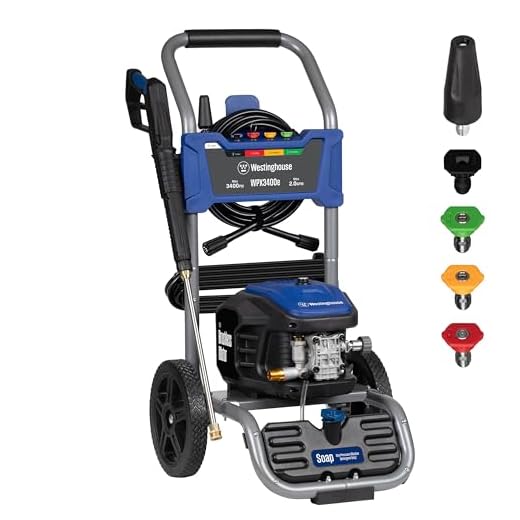

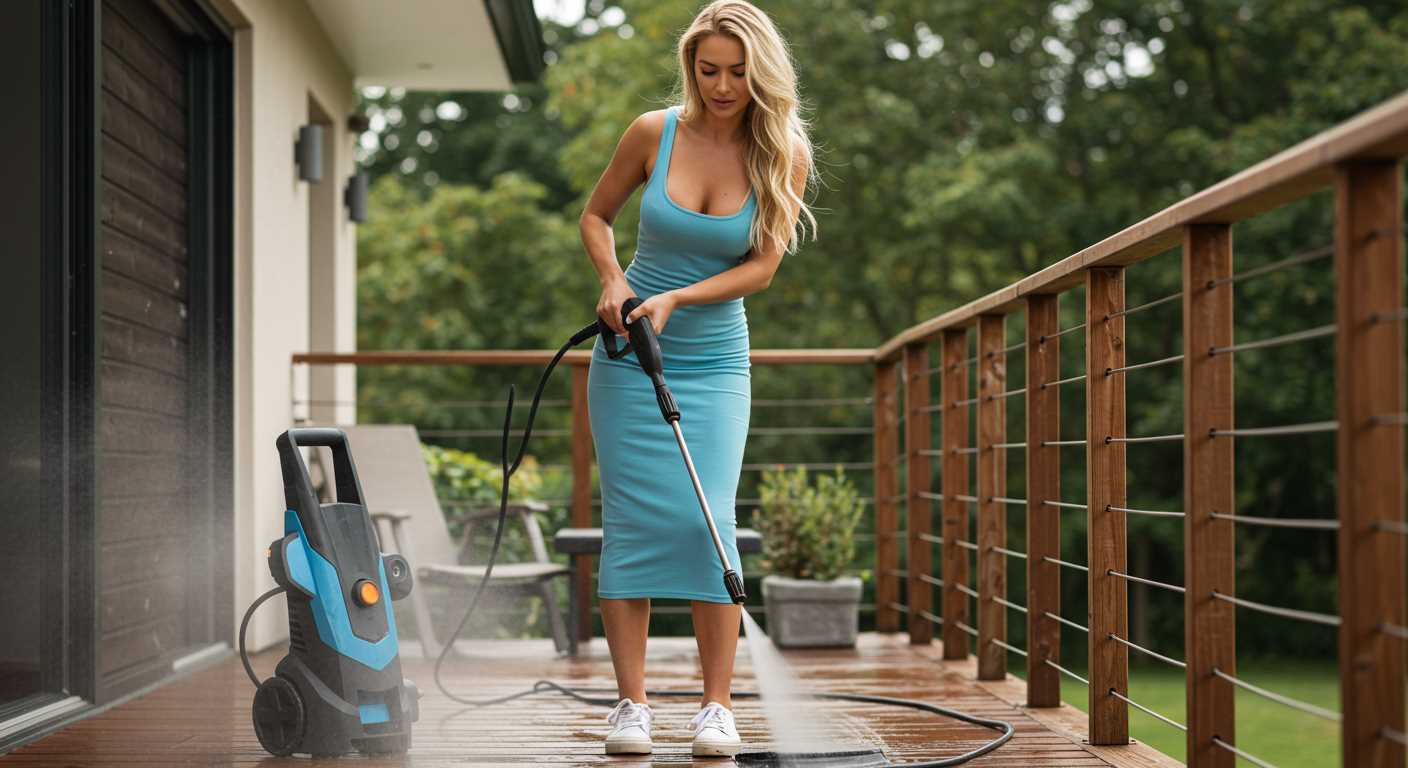
To achieve optimal cleaning results, start by selecting the right model for your specific needs. During my years in the industry, I discovered that not all machines are created equal. For instance, a compact unit may suffice for small patios, while a more robust version is necessary for larger surfaces like driveways. Assess the area you intend to clean before making a purchase.
Every unit relies on a motor to create pressure, which is then amplified through a specialised pump. This process allows water to be expelled at high velocity, effectively dislodging dirt and grime. I remember testing a particular model that boasted a unique pump design, significantly enhancing its cleaning power compared to its competitors. The difference was evident in the results, making it a preferred choice for many customers.
Pay attention to the nozzle type as well. Different nozzles provide varied spray patterns, which can influence the cleaning efficiency based on the surface material. For instance, a wide spray is ideal for gentle cleaning, while a narrow jet can tackle stubborn stains. I’ve often recommended experimenting with various nozzles to find the best fit for each task, as this can dramatically improve the overall effectiveness of the cleaning process.
Lastly, maintenance cannot be overlooked. Regularly checking the filters and hoses can prevent clogs and ensure prolonged lifespan. I often share my experiences of neglecting these aspects and facing performance issues later on. A little care goes a long way in preserving the functionality of your equipment, ensuring it remains a reliable tool for years to come.
Understanding the Mechanism Behind High-Pressure Cleaning Devices
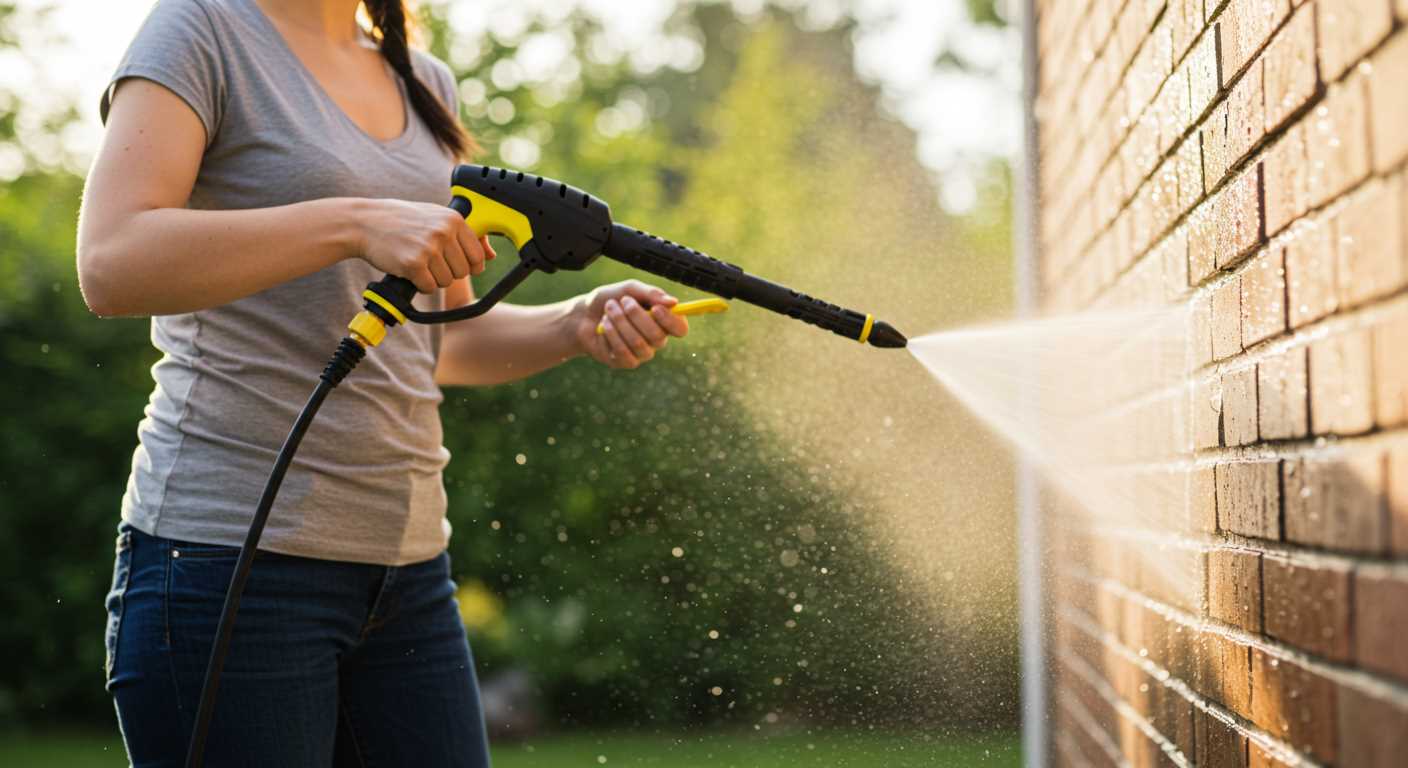
For optimal performance, regularly inspect the inlet filter. A clogged filter reduces water flow, leading to decreased efficiency. During my years in the field, I found that a simple cleaning routine can prevent many issues. Keep it clear, and you’ll notice the difference in cleaning power.
These devices are designed to amplify the pressure of the water from your tap. The process begins with a motor that drives a pump. The pump takes in water and compresses it, generating a significant increase in pressure. This high-pressure stream flows through a nozzle, where it is directed onto the surface you’re cleaning.
Key Components and Their Functions
The heart of the system is the pump, typically a triplex plunger pump, which is known for durability and efficiency. My experience showed that pumps with brass heads last longer and withstand higher pressures compared to plastic alternatives. The motor, whether electric or petrol, dictates the overall power and portability of the unit.
| Component | Function |
|---|---|
| Pump | Increases water pressure for effective cleaning |
| Nozzle | Shapes the water stream for various cleaning tasks |
| Motor | Powers the pump and determines operational force |
| Hose | Delivers the high-pressure stream to the cleaning surface |
| Filter | Prevents debris from entering the pump |
Maximising Performance
Adjusting the nozzle is crucial for achieving the desired cleaning effect. A wide spray is effective for rinsing, while a narrow stream is perfect for tough stains. I’ve often recommended experimenting with different settings to find what works best for each specific task. Remember to always use the right detergent for the job; it enhances the cleaning process significantly, especially for oil and grease.
In conclusion, understanding the inner workings of these machines allows for better maintenance and utilisation. A little knowledge goes a long way in ensuring longevity and optimal performance.
Understanding the Pump Mechanism
The heart of any high-pressure cleaning device lies in its pump mechanism. This component is responsible for converting the electrical energy into hydraulic energy, allowing for the powerful jet of water necessary for effective cleaning. In my experience, a well-functioning pump can make all the difference between a mediocre clean and a spotless finish.
Types of Pumps
There are primarily two types of pumps used in these devices: axial and triplex pumps. Axial pumps are generally found in lighter models and are suitable for occasional use. They operate with a simple mechanism, where the motor drives a shaft that pushes pistons back and forth. However, for more demanding tasks, triplex pumps are the go-to choice. They feature three pistons in a triangular arrangement, providing a more continuous flow and higher pressure. In my testing, I’ve noticed that machines with triplex systems tend to last longer and offer better performance over time.
Maintenance Tips
To ensure the longevity of the pump, regular maintenance is key. Always check the water inlet filter and clear any debris before use. This simple step can prevent unnecessary wear. Additionally, using the correct detergent is essential; harsh chemicals can damage the seals within the pump. I’ve seen firsthand how neglecting these details can lead to costly repairs or even complete pump failure. Flushing the system with clean water after each use can also extend its life significantly.
Water Pressurisation Techniques
To achieve high levels of force, the method of pressurising water is key. In my experience, the heart of this process lies within the pump system. Here’s a straightforward breakdown of how it functions.
Initially, the pump draws in water from a source, usually a hose connected to your household supply. This is where the magic begins. The pump contains a set of pistons that move back and forth within a cylinder. As the pistons retract, they create a vacuum that pulls water into the chamber. Upon their forward movement, the pistons compress the water, elevating its pressure significantly.
I’ve observed that the design of the pump, including the size of the pistons and the speed at which they operate, directly influences the pressure output. For instance, larger pistons typically generate greater pressure, while a higher RPM (revolutions per minute) results in faster water flow and increased force.
Another key component is the pressure switch, which monitors the water pressure within the system. If the pressure drops below a specific threshold, the switch activates the pump to restore optimal levels. This automatic regulation not only ensures consistent performance but also protects the equipment from potential damage due to low pressure.
In addition, some devices incorporate an accumulator, which acts as a reservoir of pressurised water. This feature is invaluable during sudden changes in water flow, as it helps maintain a steady pressure output even when the demand fluctuates. I’ve found that machines equipped with this element often deliver a more reliable cleaning experience.
Lastly, it’s worth mentioning the nozzle. The design and size can further affect how the pressurised water is released. A narrow nozzle concentrates the force, making it ideal for tough stains, while a wider one disperses the water for broader coverage. Over the years, I’ve learned the importance of selecting the right nozzle for the task at hand.
Understanding this pressurisation process can elevate your cleaning game, allowing you to tackle various surfaces and grime with ease. It’s all about harnessing the power of pressurised water effectively.
The Role of the Motor in Operation
The motor is the heart of any cleaning device, driving the system and ensuring optimal performance. In my years of experience, I’ve seen how a well-designed motor enhances the efficiency and longevity of the equipment.
- Power Source: Most models utilise electric motors, which provide a reliable and consistent power supply. These motors convert electrical energy into mechanical energy, allowing for the generation of high-speed rotations that drive the pump mechanism.
- Horsepower Matters: The horsepower rating is crucial. A higher horsepower often translates to greater water flow and pressure. During my testing, I found that models with robust motors not only cleaned effectively but also maintained pressure over extended periods.
- Cooling Mechanism: Effective cooling systems integrated into the motor prevent overheating. I’ve encountered motors that lack proper cooling, leading to premature failure. Always opt for devices designed with thermal protection features.
- Durability: Quality materials in motor construction contribute to longevity. I’ve worked with units that use brushed motors, which tend to wear out faster compared to brushless counterparts. Selecting a model with a brushless motor can save you from frequent replacements.
- Noise Levels: A powerful motor doesn’t have to be loud. Some manufacturers prioritise noise reduction technologies, making operations quieter. During my experience, I’ve appreciated models that allow for effective cleaning without disturbing the neighbourhood.
In practical terms, consider the tasks at hand. For light cleaning, a lower horsepower motor suffices. However, for heavy-duty applications, investing in a higher-rated motor pays off. It’s akin to understanding how to can fresh green beans without a pressure cooker; the right equipment makes all the difference.
Ultimately, selecting the right motor enhances not only cleaning efficiency but also your overall experience with the device. A well-performing motor ensures that you can tackle any job with confidence and ease.
Different Nozzle Types and Their Functions
Choosing the right nozzle can significantly enhance cleaning results. Each type serves a specific purpose, making it essential to understand their functions.
Types of Nozzles
- 0-Degree Nozzle: This nozzle produces a concentrated, powerful jet of water. Ideal for tough stains on hard surfaces like concrete. Use it with caution to avoid damaging delicate areas.
- 15-Degree Nozzle: Slightly wider than the 0-degree, this nozzle is perfect for removing grime from driveways and sidewalks. It strikes a balance between power and coverage.
- 25-Degree Nozzle: A versatile option for cleaning decks, patios, and vehicles. It provides a wider spray pattern while still delivering effective cleaning power.
- 40-Degree Nozzle: This is best for gentle cleaning tasks, such as washing cars or siding. The broad spray pattern ensures even coverage without risking surface damage.
- Soap Nozzle: Designed specifically for applying detergent, this nozzle allows for a wide mist that helps to break down dirt and grime before rinsing.
Personal Experiences
In my years of testing, I found the 25-degree nozzle to be my go-to for most tasks. When cleaning my patio, it effectively removed built-up dirt without risking the surface underneath. However, the 0-degree nozzle was a lifesaver when I tackled stubborn oil stains on my driveway; the concentrated jet cut through the grime effortlessly.
Remember to adjust your approach based on the surface and the type of dirt you’re dealing with. Using the wrong nozzle can lead to unsatisfactory results or even damage. Always start with the widest spray and work your way down to more concentrated jets as needed.
Maintaining Your Karcher Pressure Washer
Regularly inspect the device for wear and tear. Pay attention to hoses and connections; any signs of cracks or leaks require immediate replacement. I once had a hose that wore out faster than expected, leading to reduced performance. Replacing it promptly restored the pressure and efficiency.
Always clean the filter and nozzle after each use. Debris can accumulate, affecting the flow and pressure. I’ve seen clogged nozzles lead to frustrating results during cleaning tasks. A simple rinse under running water can prevent this issue.
Check the oil level in the motor if your model requires it. I’ve found that neglecting this step can lead to overheating and reduced lifespan. Maintaining proper oil levels has saved me from unnecessary repairs.
Store the unit in a dry, protected area to avoid damage from weather conditions. I used to leave mine outside, and it quickly deteriorated. Now, I keep it in a shed, ensuring it remains in top condition.
Consider winterizing your equipment if you live in a colder climate. I learned the hard way that failing to drain the water can lead to frozen components. Using antifreeze was a lifesaver for my unit during harsh winters.
Finally, be mindful of the detergent used. I recommend using only those formulated for high-pressure machines. I made the mistake of using a generic cleaner once, and it caused buildup that was difficult to clean out. Sticking to compatible products ensures longevity and performance. For anyone dealing with stubborn grime, check out this guide on removing algae from stones with household remedies.
Troubleshooting Common Issues
If the unit fails to start, check the power source first. Ensure the outlet is functioning and the power cable is intact. I recall a time when a colleague spent hours troubleshooting, only to find the plug wasn’t fully inserted. Simple mistakes can cost you precious time.
When there’s a loss of pressure, inspect the nozzle. Clogs are frequent culprits; a quick rinse with water usually resolves the issue. I’ve often had to clean the nozzle after dealing with stubborn dirt, which reminded me to always check that first.
If the motor produces an unusual noise, it might indicate a problem with the bearings or an obstruction. In one instance, I found a small pebble lodged in the pump, causing havoc. Regularly checking for debris can save you from costly repairs.
If water leaks from the machine, inspect all connections. Tightening hose fittings often solves this issue. I’ve seen leaks lead to frustration during jobs, and a simple twist can remedy the situation almost instantly.
Should the unit vibrate excessively during operation, it’s wise to check the surface it’s on. Uneven ground can cause instability. I’ve learned to always set up on a flat, stable area for optimal performance.
When the detergent doesn’t dispense, verify that the soap nozzle is in place and that the detergent tank isn’t empty. I remember a frustrating day when I forgot to refill the tank before starting a job, leading to an unexpected halt. Always double-check your supplies before beginning.
If you encounter an issue that persists despite troubleshooting, consulting the manual or contacting customer support is advisable. I’ve often referred to manuals for obscure problems that seem to have no easy fix. They can be surprisingly helpful.
FAQ:
How does a Karcher pressure washer create high-pressure water?
A Karcher pressure washer operates by drawing water from a source, such as a tap, and passing it through a motor-driven pump. The pump increases the water pressure significantly, often up to 150-200 bar, depending on the model. This high-pressure water is then expelled through a nozzle, which narrows the flow, thereby increasing the velocity of the water. This process allows the washer to remove dirt, grime, and stains from various surfaces effectively.
What kind of maintenance does a Karcher pressure washer require?
To keep a Karcher pressure washer in good working condition, regular maintenance is necessary. This includes checking and cleaning the filter to ensure there are no blockages, inspecting hoses for wear and tear, and ensuring all connections are tight. After each use, it is advisable to run clean water through the machine to prevent any detergent residue from clogging the system. Additionally, seasonal maintenance, such as checking the oil levels and inspecting the pump, can help prolong the lifespan of the washer.
Can I use a Karcher pressure washer for different cleaning tasks?
Yes, a Karcher pressure washer is versatile and can be used for various cleaning tasks. It is suitable for washing cars, cleaning patios, driveways, and outdoor furniture, as well as removing mould and mildew from surfaces. Many models come with different nozzles and attachments tailored for specific tasks, allowing users to adjust the pressure and flow rate according to the cleaning needs. It’s advisable to read the manufacturer’s guidelines to ensure the correct settings are used for each application.
What safety precautions should I take when using a Karcher pressure washer?
When using a Karcher pressure washer, safety is paramount. Always wear protective eyewear to shield your eyes from debris that may be dislodged during cleaning. It is also important to wear gloves and closed-toe shoes to protect your skin and feet. Ensure that the power supply is adequate and that the washer is properly grounded to prevent electric shocks. Avoid pointing the nozzle at people, animals, or delicate surfaces, as the high-pressure water can cause injury or damage. Lastly, always follow the manufacturer’s instructions for safe operation.

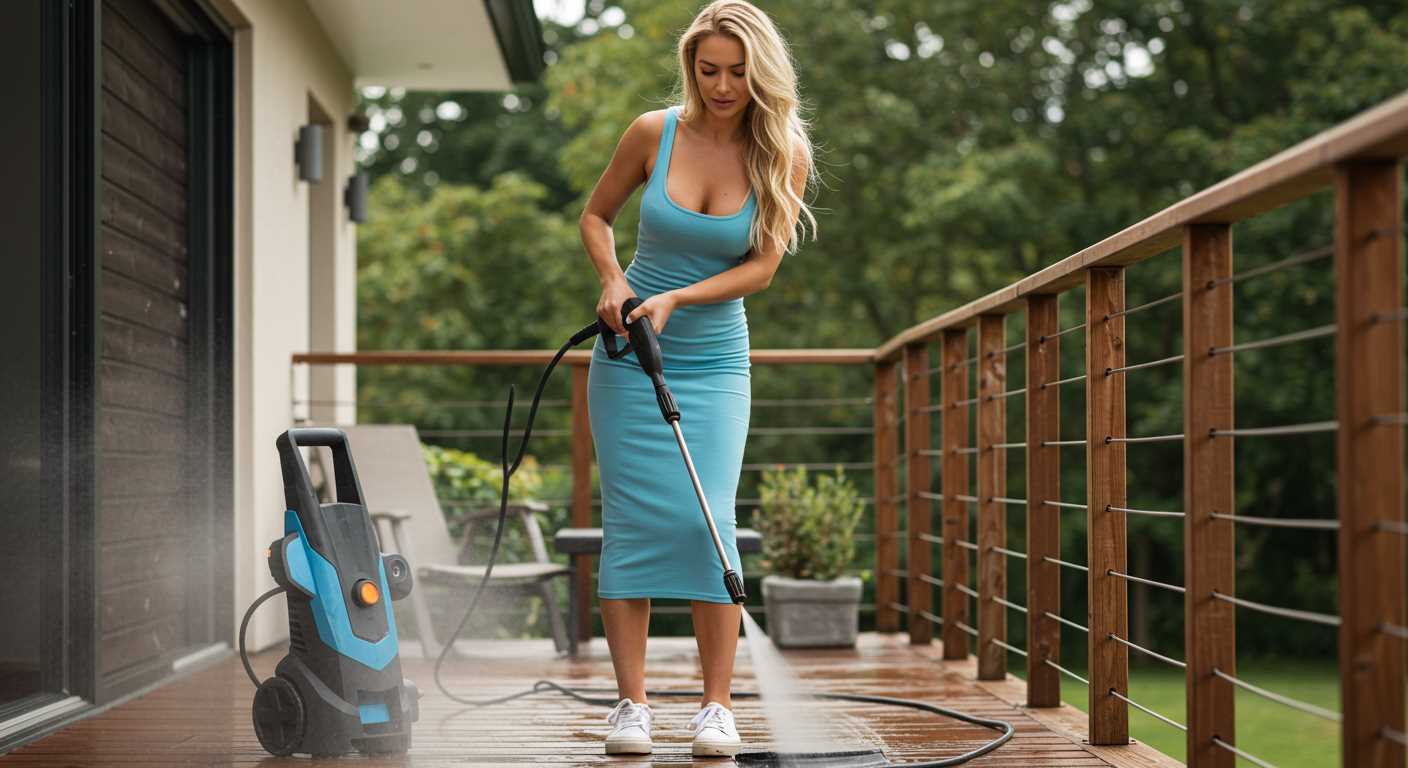




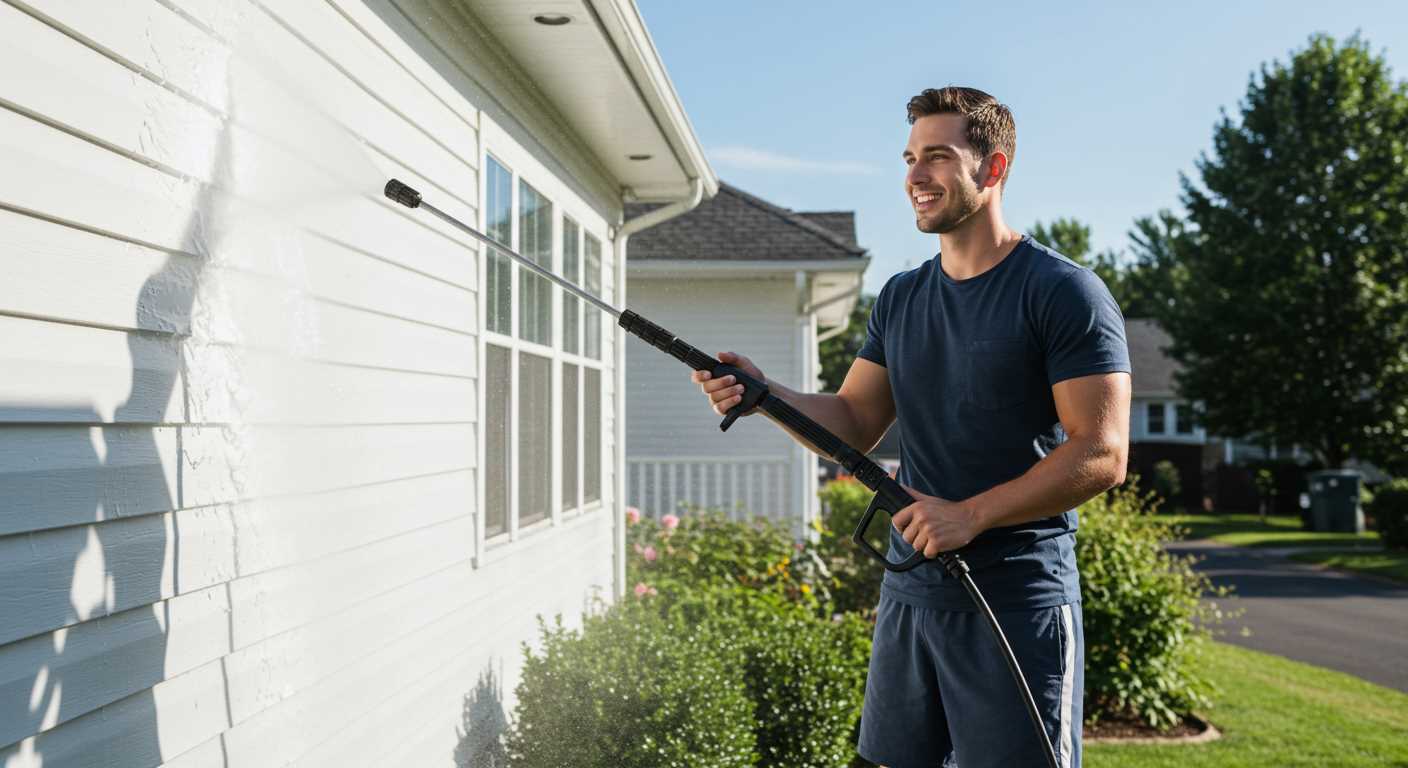
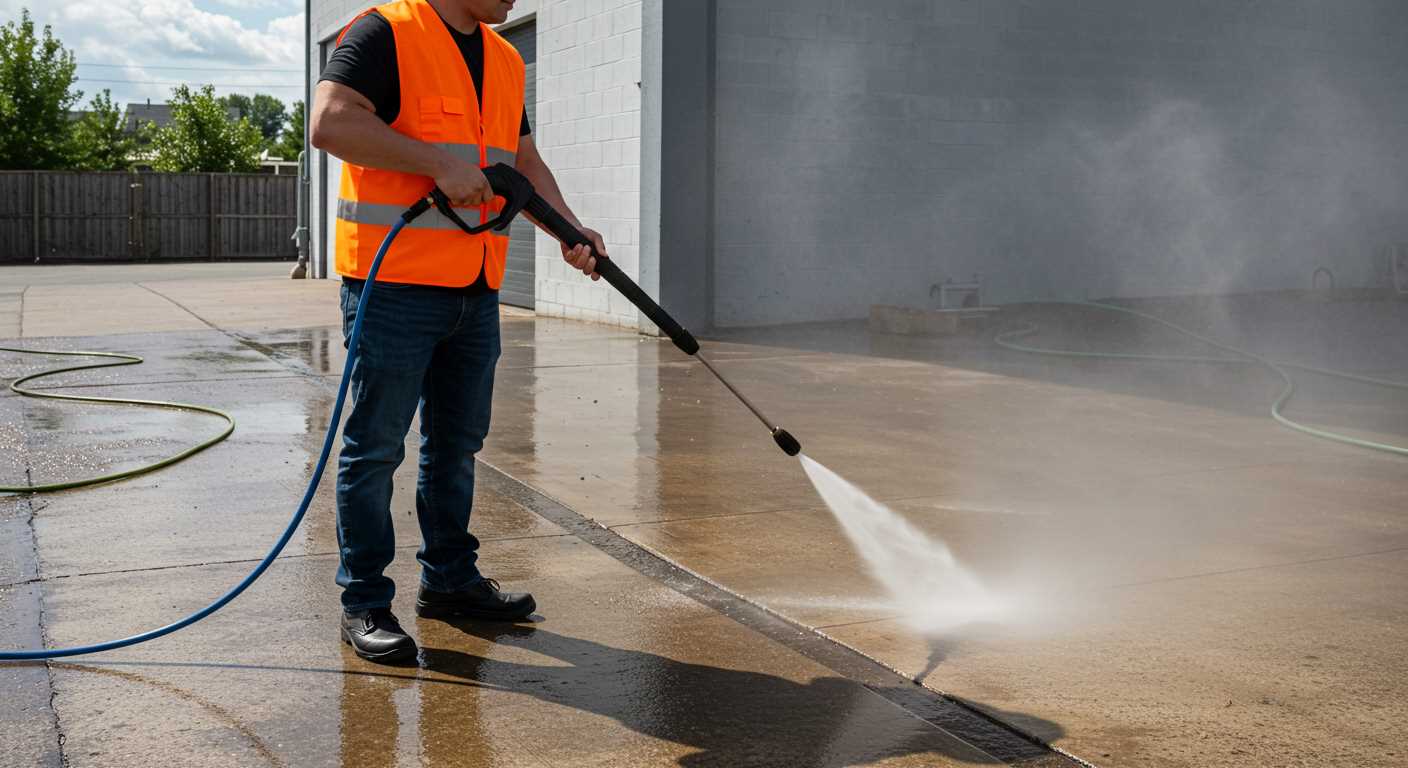
.jpg)


